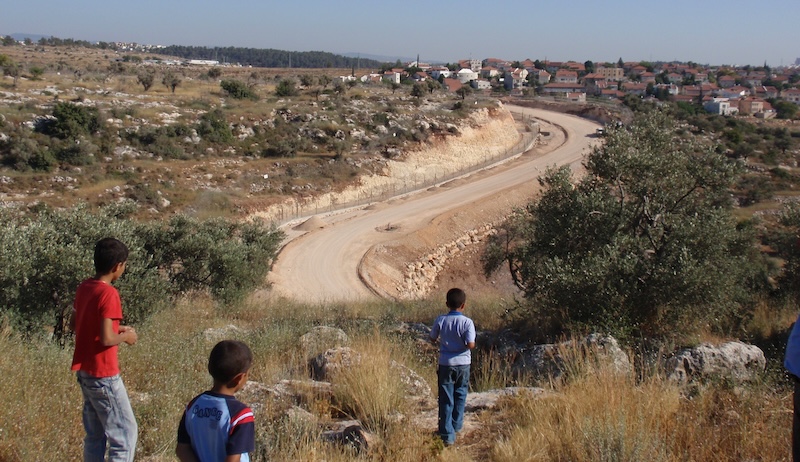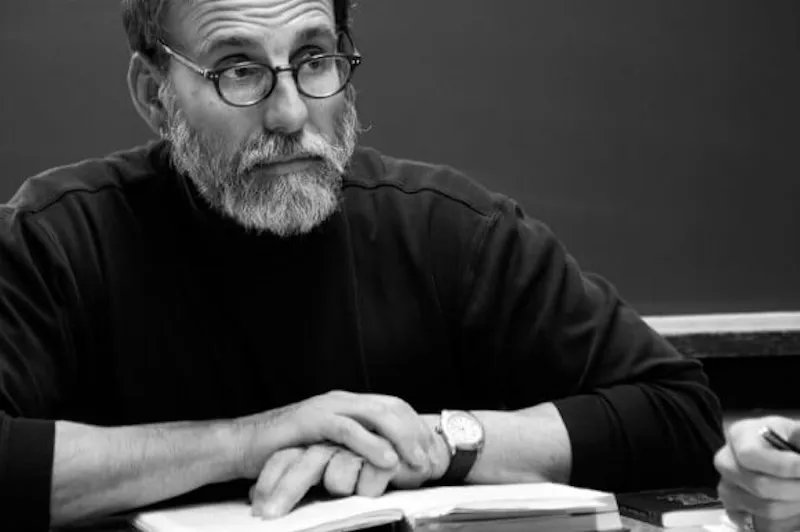
I just finished reading Shaul Magid’s The Necessity of Exile. This is the work of a rabbi who spent much of his life in Israel. It is a Jewish book for Jews grieving — not October 7th, not the growing and very real antisemitism of Trump’s America — but the realization, deep down, that something they have long loved is a cruel and bitter fantasy, its ugliness and evil an indigestible truth that insults every liberal value they believe in.
Magid writes:
As I write this in 2022, I do not think it’s provocative to state that liberal Zionism is in crisis. It is, after all, abundantly clear today that the present iteration of liberal Zionism, as a humanistic project of Jewish self-determination based on liberal democratic values, is in a defensive posture. The problem is that the social and political realities of the Israeli state today cannot be defined as “liberal” by any stretch of the imagination. This includes the country’s continued — perhaps permanent — occupation/ annexation of millions of stateless Palestinians and their land, as well as its own narrative self-fashioning — illustrated in part by the 2018 Nation-State Law, which arguably codifies Jewish domination, even supremacy, into the state itself. (The law states that national self-determination is “exclusive to the Jewish people” in the State of Israel, where non-Jews comprise over 20% of the population.) Many in the contemporary Zionist camp celebrate this ethnocentric turn. Most liberal Zionists do not. And yet most liberal Zionists remain steadfast in their defense of the State of Israel. Therein lies the crisis.
Magid writes that this extends to diaspora Jews, particularly American Jews raised with not necessarily the reality of democracy and equality, but with a deep belief in those ideas.
Last year these uneasy American Zionists watched as their Israeli cousins massed in the hundreds of thousands in Tel Aviv and elsewhere to save Israel’s — not really a democracy — from fascists, racists, religious fanatics and genocidal monsters. Of course, absent from Israel’s so-called “democracy movement” was any pursuit of democracy for Palestinians on either side of the Green Line.
In parallel with the shifting values of liberal Jews, Magid notes how liberal America (at least parts of it) has also begun to jettison our own colonial-setter ideology:
John O’Sullivan’s Manifest Destiny theory was an engine that drove the American settler-colonial project during the western expansion, but was then replaced with Teddy Roosevelt’s “melting pot,” Horace Kallen’s “cultural pluralism,” John Kennedy’s “nation of immigrants,” as well as later forms of multiculturalism. In retrospect, Manifest Destiny was, and remains, a racist and discriminatory ideology. Yes, white supremacists still hold Manifest Destiny as one of their ideological foundations, but such illiberal ideas are justifiably under attack in the continued culture wars of twenty-first century America, as they should be. Manifest Destiny today has become the provenance ofthe far-right white nationalists in America, while liberal and progressive Americans have rejected it out of hand. Yet, the illiberal Zionism of the “untroubled committed [liberal Zionist],” the Manifest Destiny of the Israeli context, now rules the State of Israel.
Facing up to one’s own country’s settler-colonial history is not so easy. When Representative Lydia Velazquez introduced a resolution calling for annulment of the Monroe Doctrine, it received only six co-sponsors — all people of color — and GovTrack estimated it had a 0% chance of adoption. So if America is one step ahead of Israel in facing up to its racist, genocidal history, that step can only be measured in millimeters.
But Zionism’s main problem is that it appeared too late in world history. Ethnonationalism fell into disrepute after World War II for obvious reasons. Not simply an anachronism, Zionism like its ugly siblings Christian nationalism and Hindutva, is fundamentally racist, exclusionary, and undemocratic. A nation built on the supremacy of one ethnicity is bad enough, but when you throw in god and messianism, it quickly becomes both a moral and political disaster.
For those deeply invested in Zionism and its accompanying settler-colonialism, all criticisms are strongly deflected as nothing but antisemitism. Much in common with antisemites themselves, attempts to distinguish Zionism from Judaism are likewise rejected by Zionists, who claim that a Zionist state is the home of all Jewish people, and that (as antisemites could only dream) all Jewish people ought to leave their homelands and move to Israel.
The Zionist conflation of nationalism and religion only reinforces the antisemitic view that all Jews are racist ethnonationalists, and this is largely responsible for the predictable spikes in antisemitic expression whenever Israel’s aggression towards Palestinians becomes most severe. Similarly, the IHRA definition of antisemitism is designed to conflate Judaism and Zionism, a multi-tool to be used as both cudgel and legalism to muzzle Israel’s critics.
Unfortunately there is some truth to the conflation, as Judaism itself has been all-too-willingly put to work in the service of Zionism. It was once verboten to speak of an Israel that had not been divinely reconstituted. Orthodox Jews originally reviled Zionism and even today the Satmar, perhaps the largest sect of Haredim, still reject it. There is also a long history of anti-Zionism among liberal Jews, who before 1948 issued countless — prescient — warnings of the disaster that Ben Gurion’s expansionist vision would unleash on both Jews and Palestinians.
But after the 1967 war, many Jews began to think that all that winning must have been divinely ordained. Today there are few congregations that don’t host Zionist Federation events or have youth or congregational programs centered around Israel, lending weight to the view that antisemites hold that there is little distinction between Judaism and Zionism.
Rabbi (Rav) Abraham Isaac Kook predated the formation of the state of Israel, but he broke with Jewish Orthodoxy (literally) by claiming that creating a Zionist state was the first step of a messianic redemption of not only Jews but of the entire human race. After 1967 Kook’s son Zvi Yehuda Kook took it up a notch and created the Gush Emunim movement, upon which Israel’s violent settler movement is founded.
All this blending of Zionism and Judaism was bound to create a philosophical and theological muddle. Zionism was supposed to redeem Jews (particularity) and even the whole world (universality). But wasn’t that the purpose of Judaism?
As a rabbi, Magid dives into the question, looking at the historicity of some of these ideas within Judaism. He examines how the particular and the universal have always been in tension with one another in Judaism:
The universal, certainly as a kind of (perhaps messianic) ideal, was actually never quite endemic to ancient Israelite religion, even with the biblical tropes such as the decree that the Israelites shall be “a light unto the nations.” Yet Jewish responses to the universal-particular conundrum, which sometimes portray Jews as simultaneously “normal” (as in a normalized people) and “exceptional” (as in victims in perpetuity), continue precisely because the universal still hovers as a specter over the entire Israelite project. In some cases, such as Jewish communism or even certain versions of radical Reform Judaism, the universal becomes paramount, while in some forms of nationalistic Orthodoxy, the universal is subsumed by a highly particularistic narrative to such an extent that its presence is hardly felt. In such cases, the universalist tropes in prophetic religion either become so central as to efface the Jewish people’s particularistic agenda, or become interpreted and swallowed into a highly nationalistic paradigm. But in most forms of Judaism, universalism and particularism function in productive tension with one another.
Magid sorts through various writers on particularity and universality, taking on Chaim Gans’s A Political Theory for the Jewish People (2016). He considers Gans’ notion of universality and particularity and quickly dismisses the weak argument for Zionism’s “particularity.” But he also demolishes Gans’s insistence on a universal form of Zionism. And Magid does the same with Emmanuel Lévinas:
The French-Jewish philosopher Emmanuel Lévinas seemed quite concerned with this dilemma, and sought an ethical core of Judaism (what he called “ethics as first philosophy”) that did not succumb to Reform Judaism’s assimilatory project or communism’s utopian one. He wrote numerous essays on this subject, arguing that true universalism can only arise from the particular, while the particular must carry the universal, which implicitly criticizes Kant’s cosmopolitanism, and perhaps Marx’s communism, as naïve and misguided. This remains a central concern for political philosophers to this day. But Levinas’s project apparently could not bear the weight of his own proclivities. When asked in a famous interview about the Palestinian as “other” to whom one owes primary responsibility, he responded, “The other is the neighbour, who is not necessarily kin, but who can be. And in that sense, if you’re for the other, you’re for the neighbour. But if your neighbour attacks another neighbour or treats him unjustly, what can you do? Then alterity takes on another character, in alterity we can find an enemy.” In other words, the Palestinian is not the other, the Palestinian is the enemy. “Ethics as first philosophy” meets Jewish trauma and anxiety. I think in that very honest moment, Levinas’s “ethics as first philosophy” collapses. (In pointing this out, I am influenced by Fred Moten’s devastating critique of Levinas in “There Is No Racism Intended,” in his book The Universal Machine.)
As esoteric as all this is, Magid is on to something. Zionism could have moved in a humanistic direction — but chose not to. In the end Zionism simply devolved into a naked power grab, devoid of any humanistic or universalist pretense.
Some forms of early secular Zionism attempted to embody this dynamic interplay between the universal and particular: much of it was humanistic in orientation, or at least aspirational, and committed to refracting some sense of universal values through the particularity of Jewish collective existence. This is why Marxism and socialism played such a significant role in early Zionism. The creation of a quasi-utopian collectivist entity that could be an exemplar for the revolution of Trotsky’s Fourth International was a goal of some early kibbutzniks. But that was a long time ago. The ethnostate that is contemporary Israel chose another path.
No one in Israel can live in such a society without recognizing it — even as it is almost impossible to imagine a different identity:
But if being an anti-Zionist means being anti-Israel, I could not embrace that either. Living in Israel, and still holding an Israeli passport, I didn’t quite know what it meant. I remain a citizen of that state, albeit a very ambivalent one. I served in its army. And yet I could no longer believe that Zionism, in any form, could create a just and equitable society. The myth that pervades Zionism, what Chaim Gans has called “proprietary Zionism” — that is, the fundamental precept that the land belongs to us — was, by definition, inequitable.
Magid writes of his ultimate reckoning with Zionism’s supremacist ideology in a chapter called “From My Tragic Love Affair with Zionism.” This reckoning, like that of many Israelis, was simply the product of paying attention to all the injustices around him, coming from the state he loved, and some of which he perpetrated himself:
Like many Israelis, the IDF was a transformative experience for me. I entered out of a sense of responsibility and duty to my adopted country. I served in 1988-1989, during the First Intifada. As a thirty-one-year-old father of three young children, I was what is called a “second-tier soldier”; I was in a combat unit but never saw real combat. […] But anyone who spends months in training in an army camp near Nablus in the West Bank, and travels around as a soldier, sees the ugliness and brutality of the occupation firsthand. The hatred in the eyes of Palestinian children as you walk by them in full combat gear; the humiliation of a father having to submit to the whims of a nineteen-year-old soldier in front of his son’s eyes. […] In a convoy, after dropping off a lone solider at the entrance to the Casbah (the main market) in Nablus, a fellow solider turned to me and said, “What the fuck are we doing here?” I had heard all the answers, but I had no answer for him then, and I have no answer now, other than domination, pure and simple. We do what we do because we can. That’s all. That is the reality of the Hebrew term ribbonut: not just sovereignty but a more potent implication of power over another in other words, domination. We are “masters” over the Palestinians — the settlers call “Lords of the Land.” That has become Zionism on the ground, certainly on the right but also on the center and center-left.
Sharing an American identity, Magid also makes the inevitable associations with our own, and international, history:
As a child raised in America, we learned about Jim Crow. As a graduate student during the boycotts of South African apartheid, we protested systemic oppression. Of course, each situation has its own contours and its own context, but as I experienced the reality of the occupation first-hand and, in some sense, the reality of Zionism through that lens, they were all comparable to what I witnessed as a soldier. […] The relationship between one’s experience and how one constructs the world they live in, and the world they want to create, is both vexing and complex. I moved to Israel to live in the land and to be a part of Jewish history. I experienced both deeply, intensely, and then painfully. Not being a native, my point of reference in regard to Israel, and to Zionism, was always contingent and never unconditional.
But once you have seen what cannot be un-seen, there’s no going back; there can only be alienation from what has shown itself to be an illusion. Magid’s experience is precisely like that of liberal Jews who — today, Spring of 2024 — have seen what cannot be unseen and cannot use the same vocabulary as beloved friends and family.
One can also be a stranger in one’s own home. My choice to no longer identify as a Zionist was not easy, and the choice came with considerable anguish, and pain. I lost friends, and it has strained relationships with those I still consider friends. […] But whatever I had envisioned Zionism to be, and whatever I believed I was getting myself into, at some point began to dissolve as I grew increasingly alienated from that national project. I no longer cared what it aspired to be because I could no longer bear what it was.
So if I have abandoned Zionism, now what? I believe the term “counter-Zionism” better represents my views about Israel today. I suggest we need another ideology — not a “post” but a “counter” to better equip Israel to face the next century. Zionism is too chauvinistic, too ethnocentric, too inequitable — it came to counter a diasporic existence in the wake of the cataclysmic failure of European emancipation, yet Jews today are now integrated into the countries in which they live.
In some way, Zionism was thus an understandable outgrowth of the ugliness of prewar European antisemitism. But the response to that ugliness has produced another ugliness. Here I follow Arendt who warned us of this in 1948. Maybe it was inevitable, maybe not. But that’s what has transpired, against the efforts of many truly heroic detractors, then, and now. Zionism had its time; it did its work; now it can be set aside, along with Manifest Destiny, colonialism, and any number of other chauvinistic and ethnocentric ideologies of the past.
Magid’s thought project was to look beyond Zionism. He draws heavily from Rabbi Shimon Gershon Rosenberg, הרב שג”ר [HaRav] Shagar, a postmodernist Torah scholar and intellectual who originally followed Abraham Isaac Kook. Though never progressive in a political sense, Shagar had a lot of influence within both religious Zionist and even liberal Zionist circles. Kook’s teachings were not broad enough for Shagar to reconcile with the reality he lived. Zionism’s political and religious limitations were increasingly clear and Shagar began to conceive of a next step in a redemption of the land that superseded cruel domination with a multicultural democracy. Shagar’s writings also emphasize the return to the cultural and religious wealth of a bygone age of Hasidism that became a repository for many of the Jewish values that Zionism has dismissed.
In a chapter called “Exile in the Land” Magid invokes Shagar and others, turning toward Jewish identity and the moral values that existed in exile and diaspora for hundreds of years after biblical Israel’s short 125-year run. For Magid the state is superfluous. He reminds us that many of the early Zionists specifically envisioned a mere Jewish homeland and some specifically warned against a state for both political and religious reasons.
There are those ultra-Orthodox Jews and non-Orthodox Jews such as Hermann Cohen and Franz Rosenzweig who were against the state for this very reason. They held that the authentic Jew is the exilic Jew and thus they rejected the construction of Jewishness as connected to history and politics. The answer to their critique is that the establishment of the state is not a rejection of exile but rather a dialectical move, even a Hegelian one, that redirects exile into the state itself and thereby elevates it to its next phase, the phase of the political, to a state of justice and compassion.
Shagar viewed the positive and constructive notion of exile as a humbling force that enabled Jews to develop a deeply empathetic and ethical posture toward the world and toward themselves. He recognized the hazards of sovereignty as that which could erase both a relationship to the Divine and a sense of humanism toward the “other.” Here, we see again the notion of “substitution,” which Shagar describes in this context as a turn from a belief in God to a belief in the IDF, as a kind of inversion of the “substitution” of Nahman’s messianic vision. It reminds one of Golda Meir’s famous line as recounted by Hannah Arendt: “As a Socialist, I do not believe in God; I believe in the Jewish people.”
Books like Magid’s are important for Jews at a time when the moral failures and crimes of Zionism have been so well documented, and they follow decades of political critique of Zionism as the anachronism and abomination that it is.
Neither peace in the Middle East nor Judaism can survive Zionism. A different Israel is possible and an authentic Judaism freed of racist nationalism is also possible. A growing number of Jews know it and are working to repair the world that Zionism risks destroying.

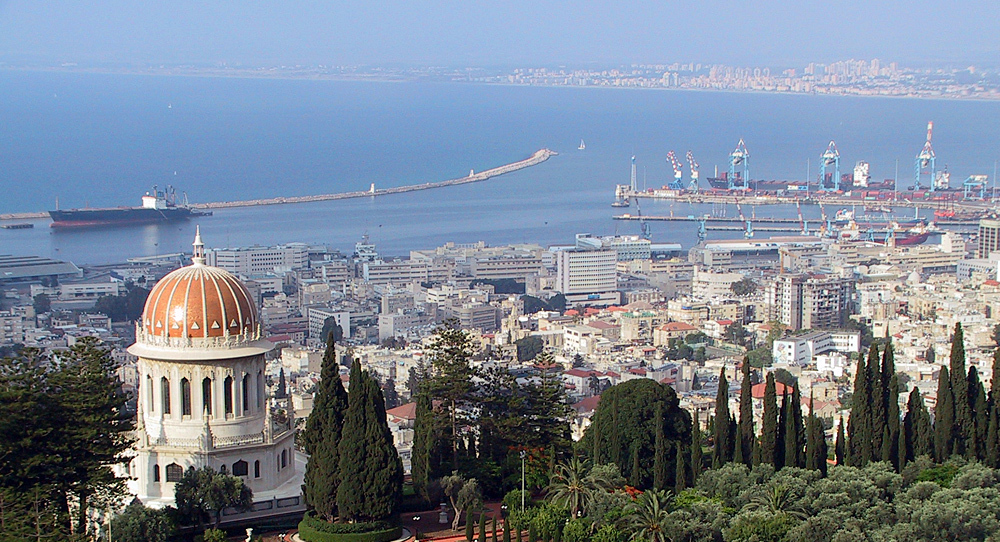
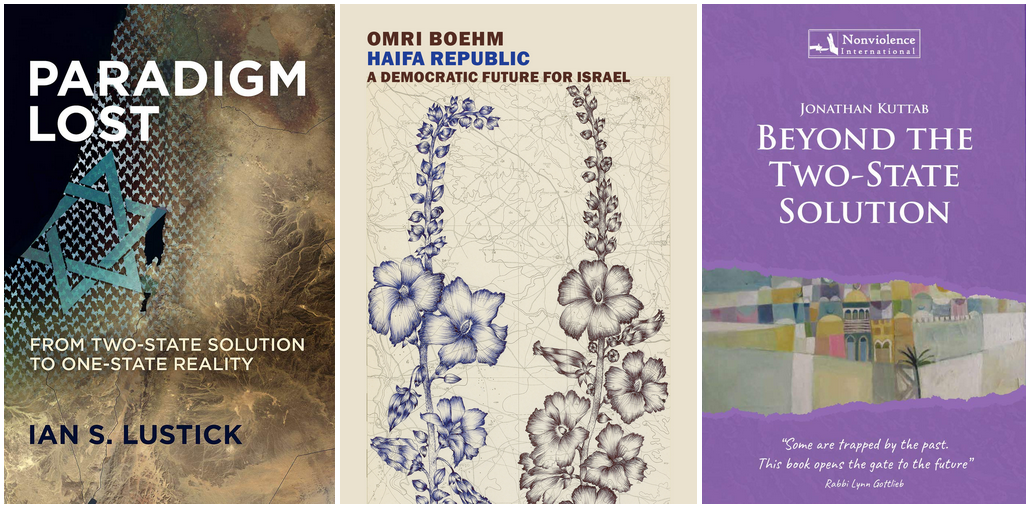



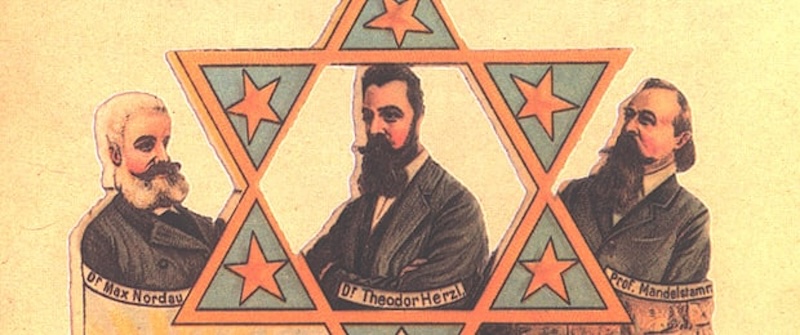



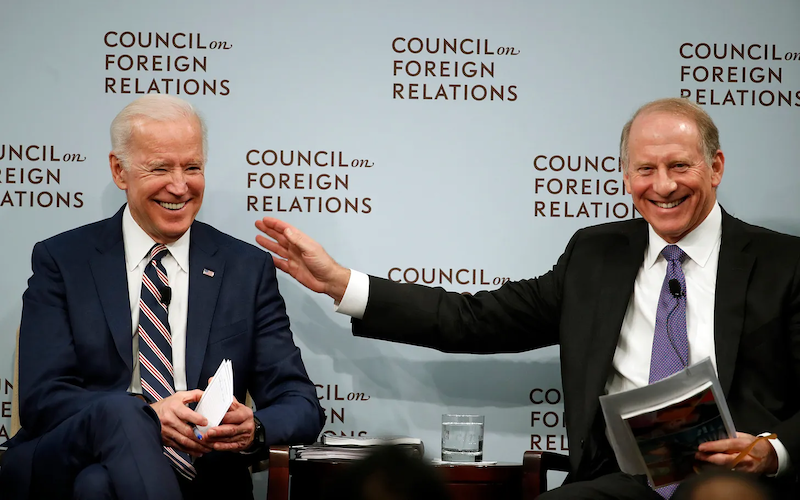
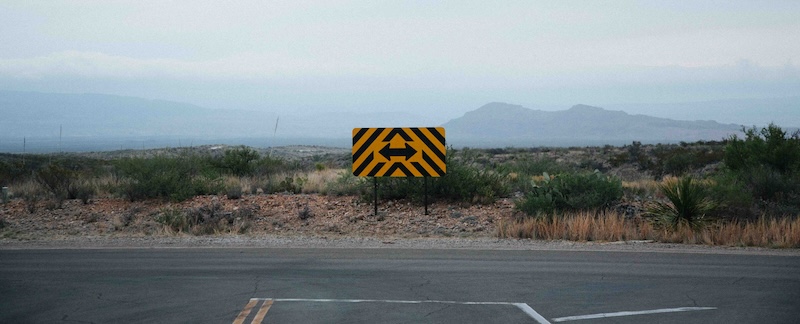
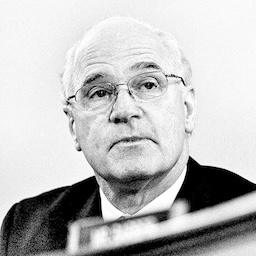
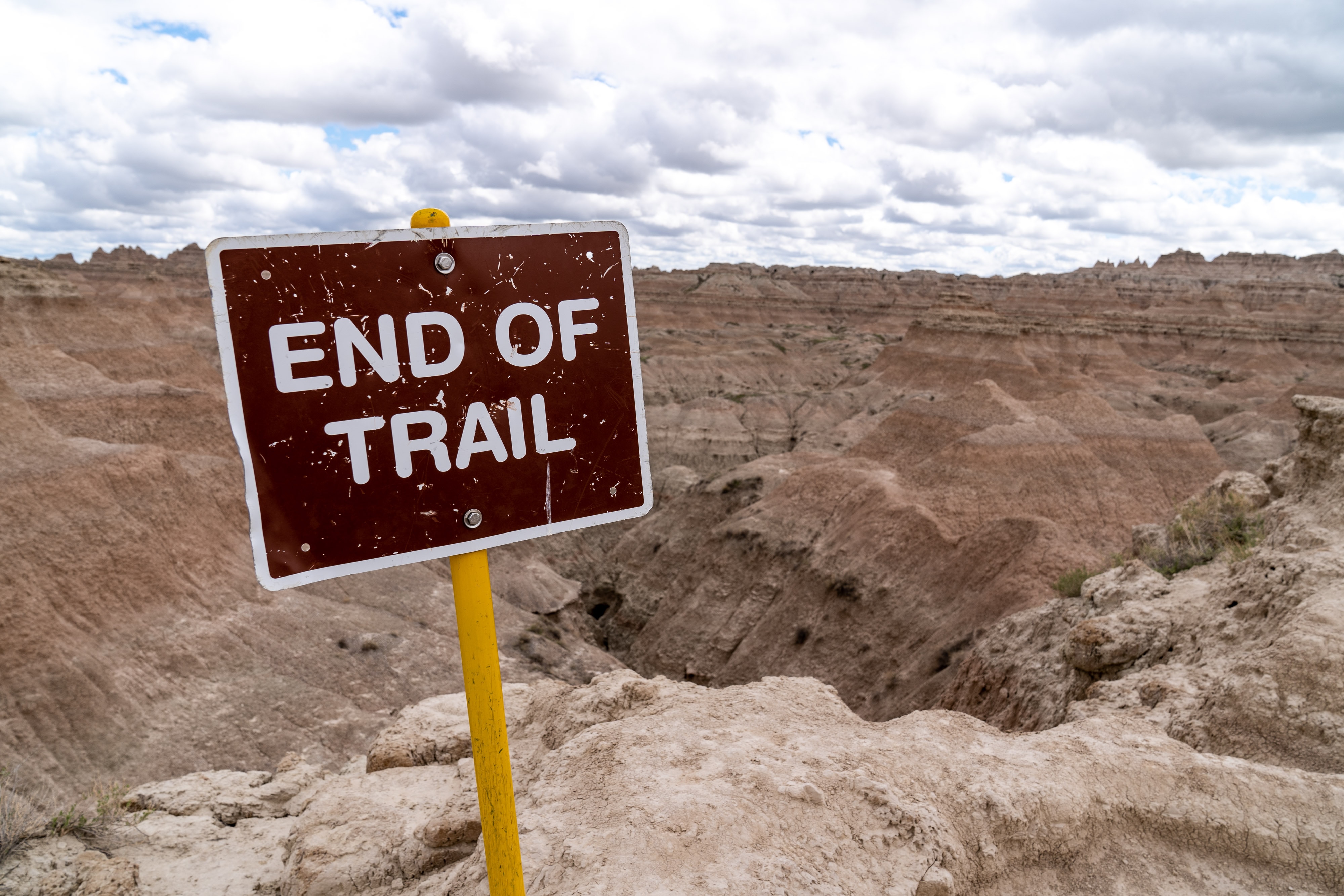
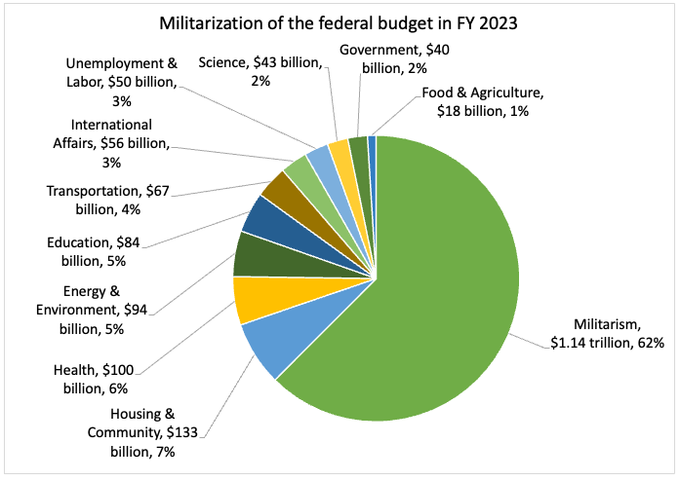
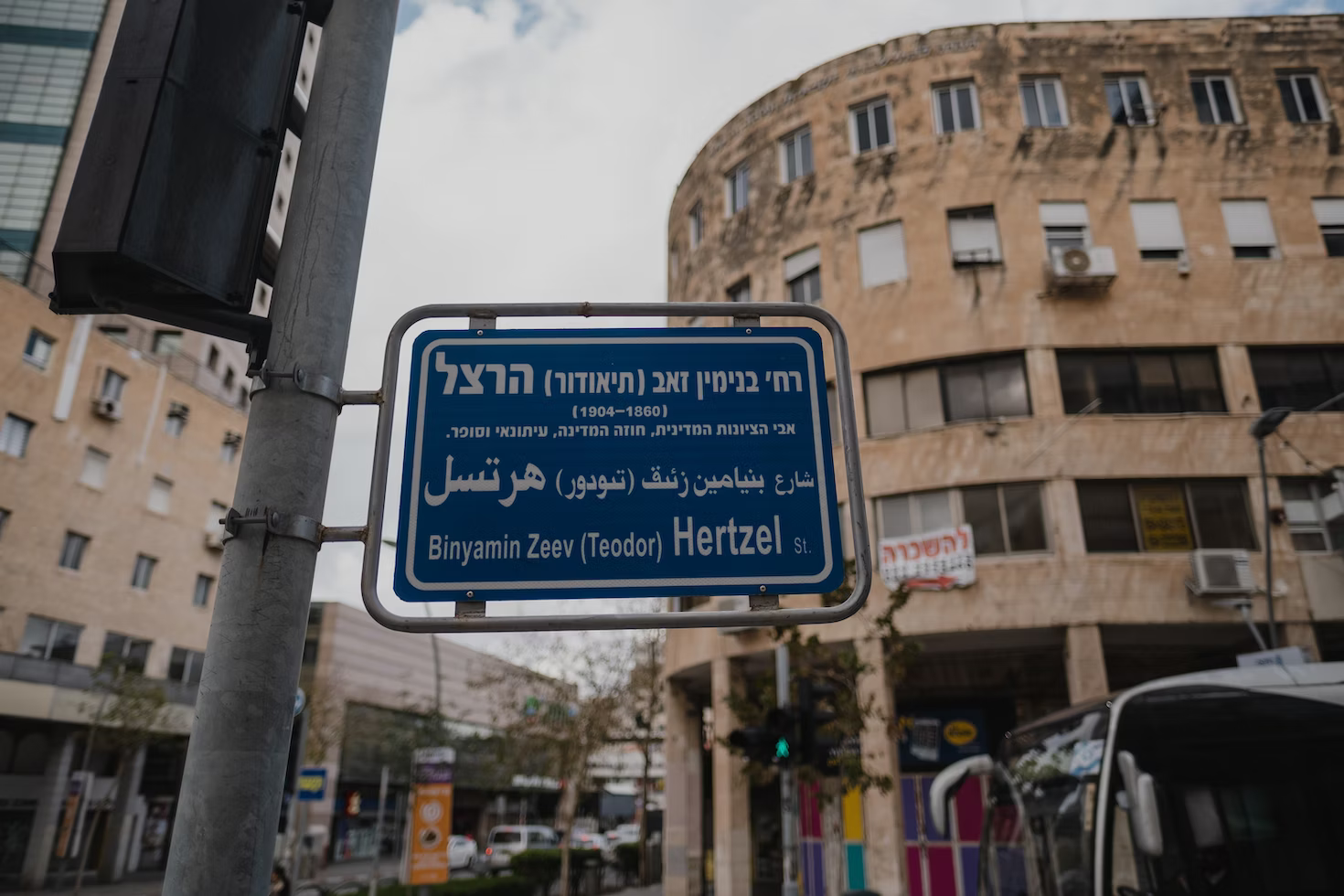

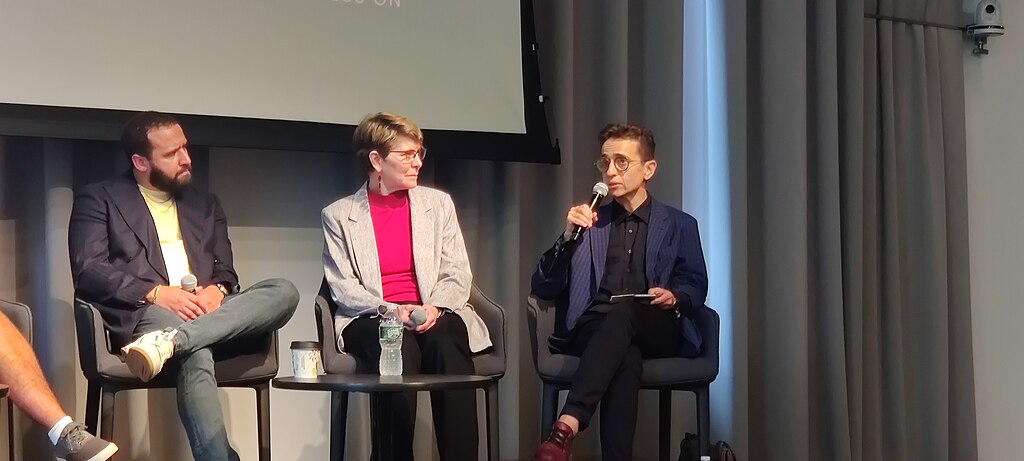 Objectivity Wars panel held at the Columbia School of Journalism, with Masha Gessen speaking (Kegoktm, 2022, CC)
Objectivity Wars panel held at the Columbia School of Journalism, with Masha Gessen speaking (Kegoktm, 2022, CC)

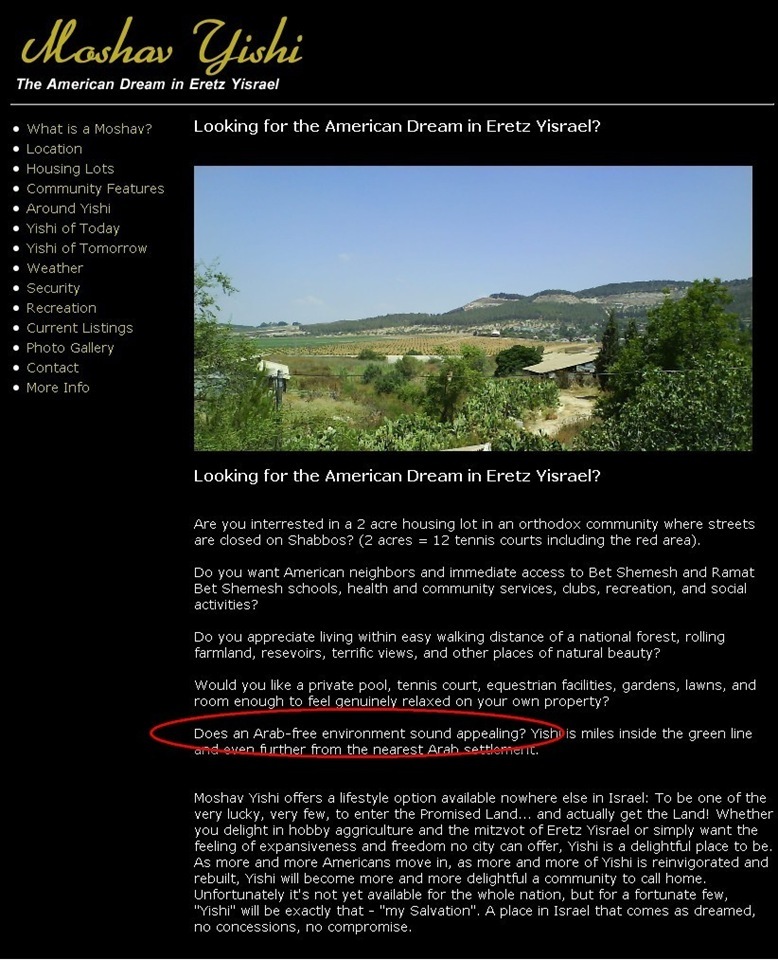




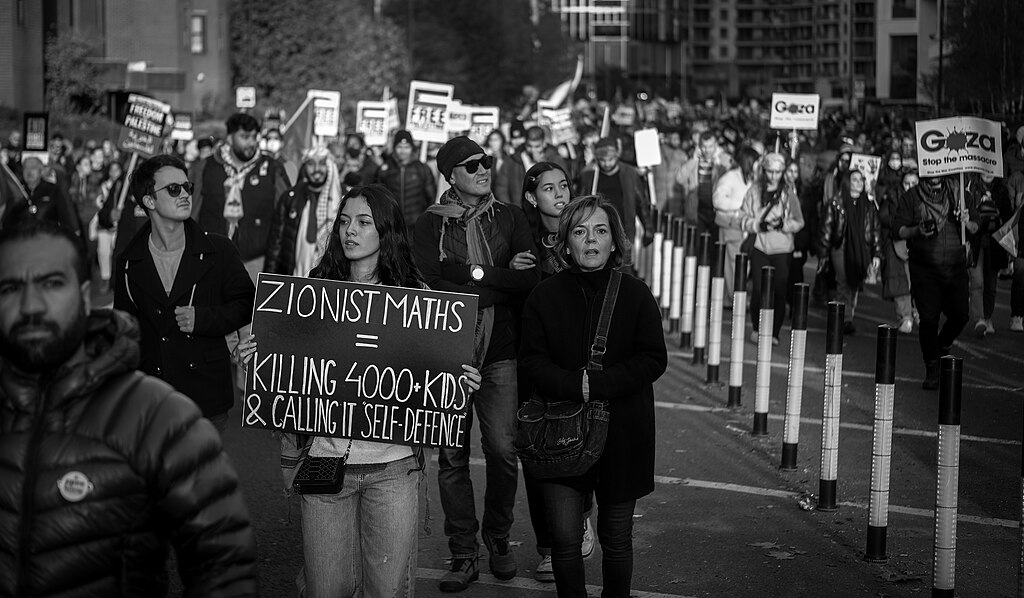
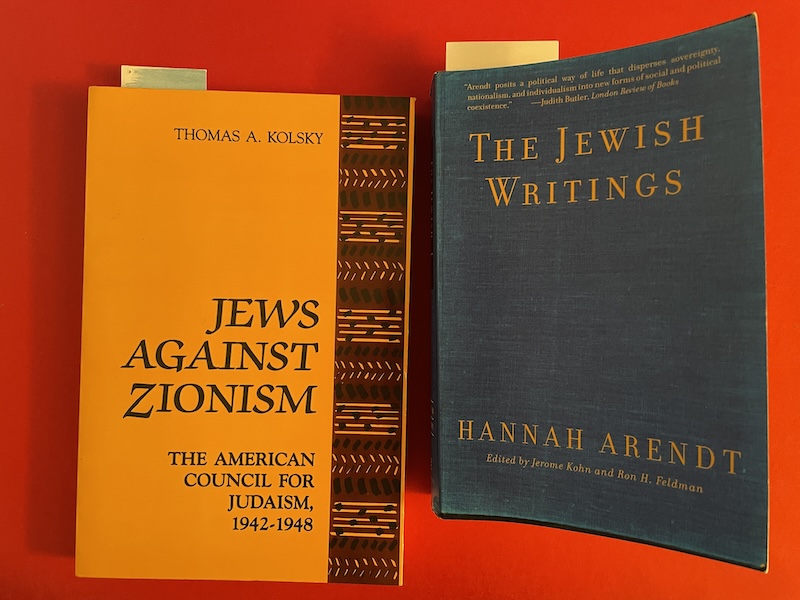
 Killing the “animals” – Israel’s “surgical” bombing of Gaza
Killing the “animals” – Israel’s “surgical” bombing of Gaza Palestinian home vandalized, reads – “Death to the Arabs”
Palestinian home vandalized, reads – “Death to the Arabs” Leaflet warning Gazans to flee south
Leaflet warning Gazans to flee south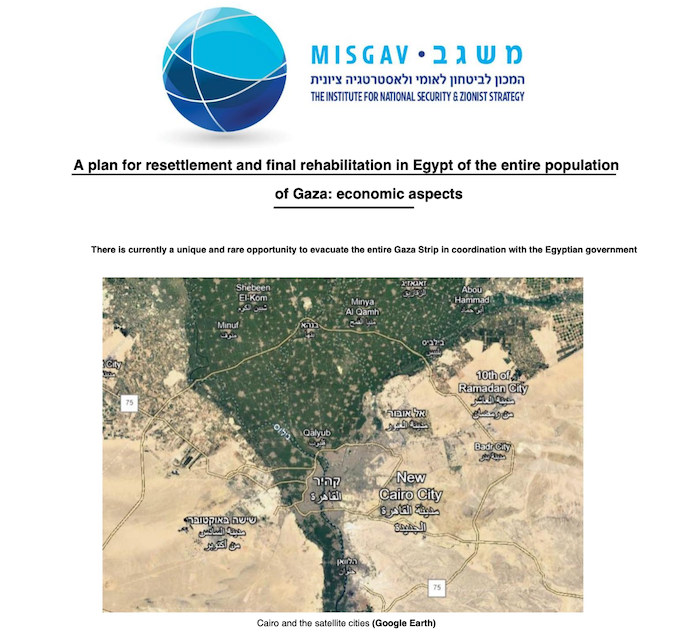

 Nof Zion is a religious Zionist settlement in East Jerusalem created by removing the Palestinian residents of Jabel Mukaber (Author, 2009)
Nof Zion is a religious Zionist settlement in East Jerusalem created by removing the Palestinian residents of Jabel Mukaber (Author, 2009) for Palestinians in the West Bank there is no such thing as freedom of movement. Instead, checkpoints and walls and barbed wire (Author, 2009)
for Palestinians in the West Bank there is no such thing as freedom of movement. Instead, checkpoints and walls and barbed wire (Author, 2009)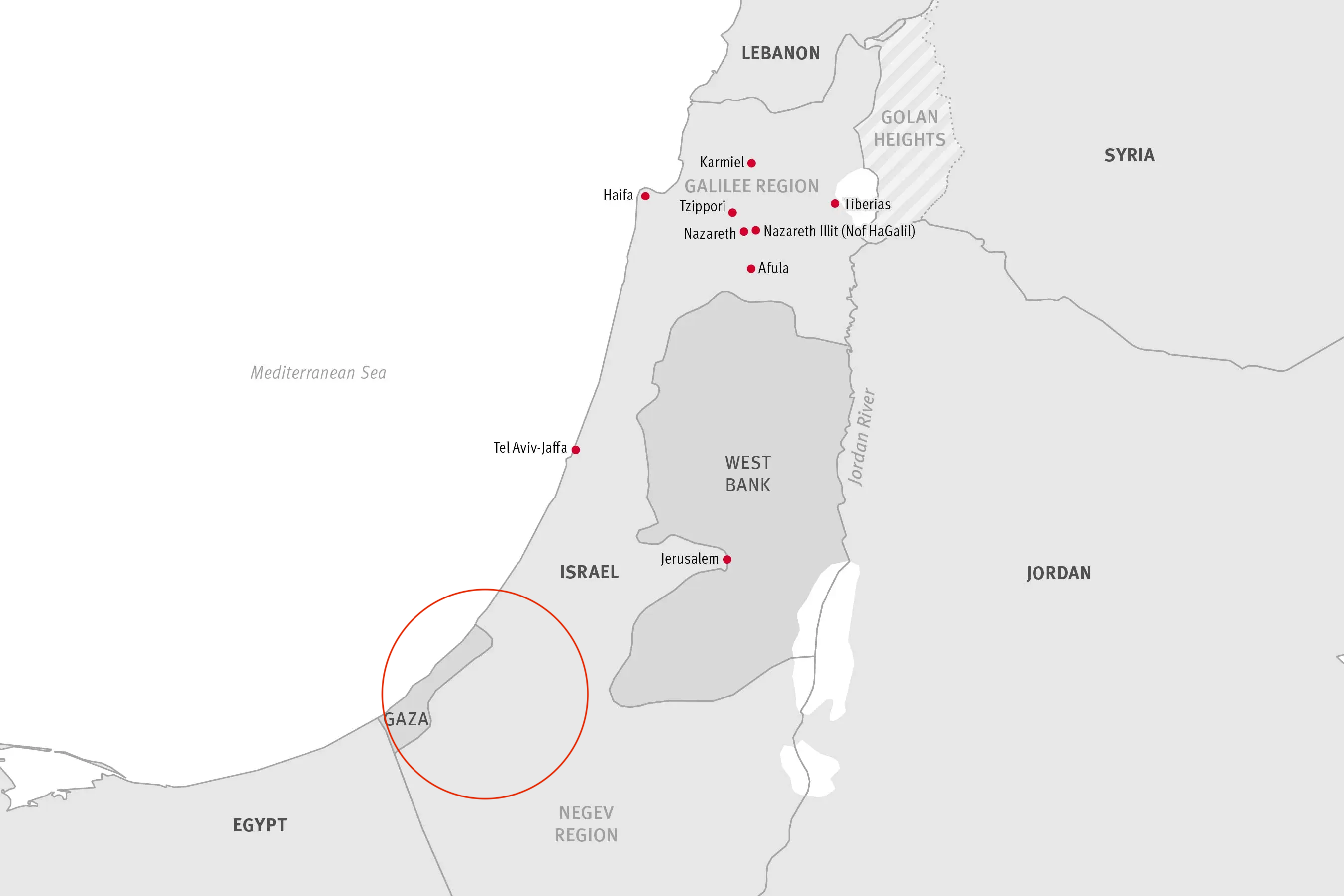 Approximate range of Hamas attacks
Approximate range of Hamas attacks Some of the 20 sites attacked
Some of the 20 sites attacked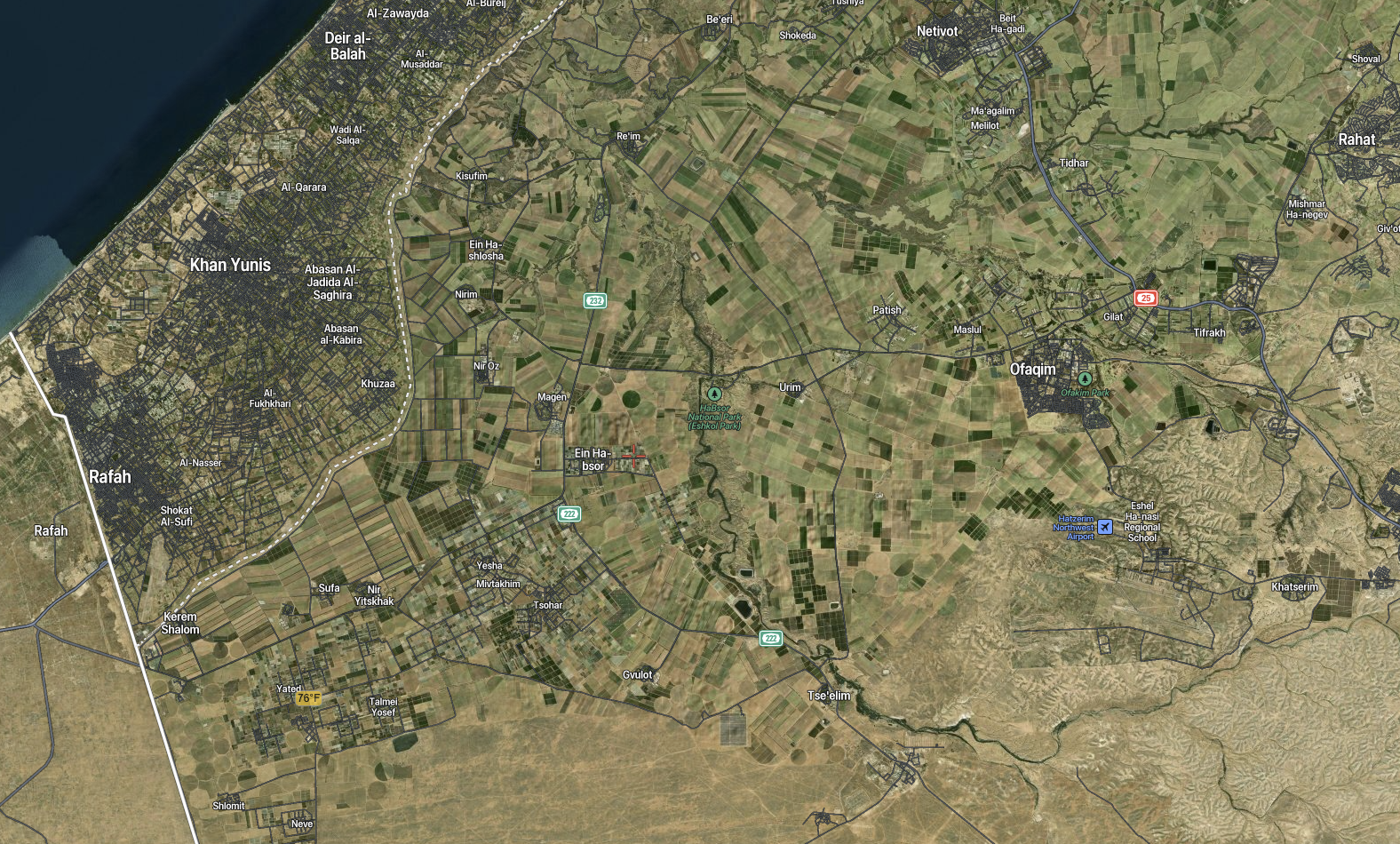 Density of Israel’s agricultural settlements and Gaza’s refugee camps
Density of Israel’s agricultural settlements and Gaza’s refugee camps